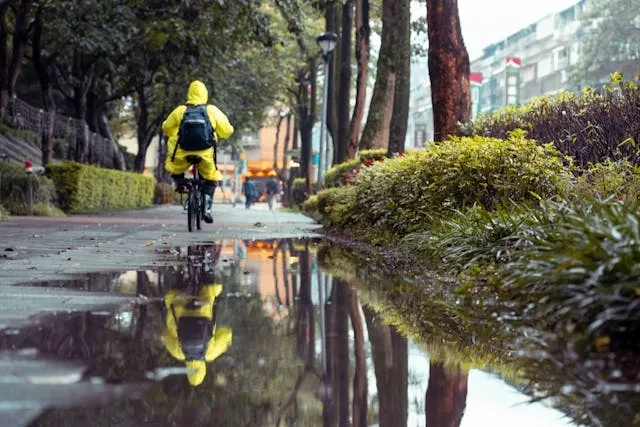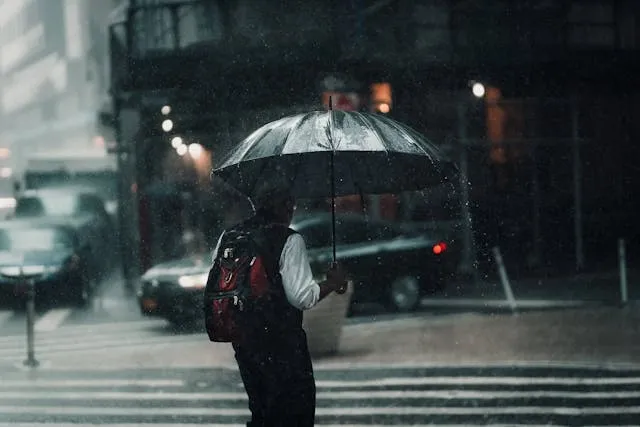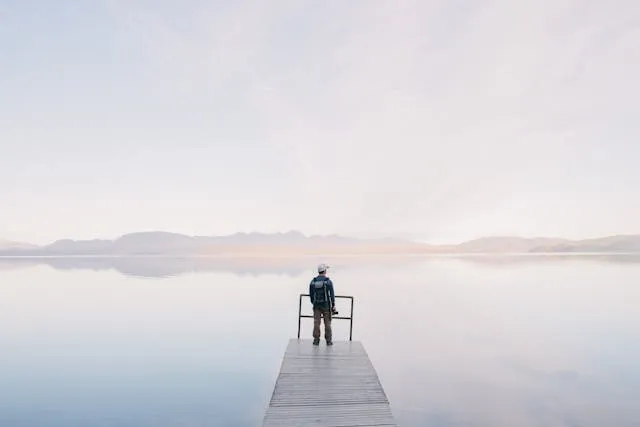How To Waterproof A Backpack? Methods, Covers, Tips, And Fabric Materials
Keeping your belongings dry in wet conditions is essential, particularly when commuting, hiking, or traveling. Understanding how to waterproof a backpack can save your gear from costly water damage.
In this guide, we look at ways to waterproof a backpack, from spray coatings to liners and custom waterproof materials. Each method suits different needs and environments, so read on to learn more.

Key Takeaways
- Learning how to waterproof a backpack is essential to protect your gear from water damage, and there are several ways to do it.
- Waterproofing spray, internal liners, wax coatings, and hiking backpack covers each offer varying levels of protection for different activities.
- Materials like canvas and nylon may need treatment, but many waterproof-rated fabrics offer built-in defense.
- We supply custom backpacks in various styles that offer good defense against water so you can use them with confidence.
Table of contents
-
How To Waterproof A Backpack?
-
How Do You Keep A Backpack Dry In The Rain?
-
How Can You Waterproof A Bag That Isn’t Waterproof?
-
Are Canvas Backpacks Waterproof By Default?
-
Is Nylon Naturally Waterproof Or Does It Need Treatment?
-
What Is The Best Waterproof Fabric For A Backpack?
-
Can You Use Waterproof Sprays To Protect A Backpack?
-
Do Backpack Covers Actually Keep Your Pack Dry?
-
How Do You Waterproof The Inside Of A Backpack?
-
How Do You Properly Maintain A Waterproof Backpack After Use?
How To Waterproof A Backpack?
A dry backpack is crucial for protecting valuables like electronics, books, and clothing. Learning how to waterproof a backpack is important, whether you’re hiking through a rainforest or walking to class. A simple option is a backpack waterproofing spray, which adds water resistance to fabric surfaces.
For longer treks, options include:
- A hiking backpack cover
- A dedicated rain shell
- Liners or dry bags inside the pack
Waxing is another reliable method, particularly for canvas materials. Outdoor workers, students, campers, adn travelers can all benefit from waterproofing. When you choose a waterproof gym duffel bag or add water-resistance to your backpack, you’re not just protecting your gear - you are adding peace of mind.

What Are The Most Effective Methods To Waterproof A Backpack?
When deciding how to waterproof a backpack, several methods stand out. Waterproofing sprays for backpacks use a chemical layer that repels moisture. They are a great choice for quick, even coverage, and they are effective on nylon and synthetic materials.
Wax coatings offer strong, long-term protection, and are particularly effective for canvas, but they require more effort to apply. Seam sealers reinforce stitched areas that are most vulnerable to leaks. For internal protection, organize your backpack and use dry bags and pack liners for complete isolation from water.
For harsh outdoor conditions, combine multiple methods for maximum reliability. Spray water repellent treatments are your best option for versatility and ease, while wax or liners may be more appropriate for rugged terrain.
How Do You Keep A Backpack Dry In The Rain?
Rain is one of the most obvious threats to your backpack’s contents. To keep your backpack dry in rain, begin with external barriers like a hiking backpack cover designed to shield your pack from direct exposure.
Internal solutions include:
- Waterproof liners
- Dry bags
- Zip-sealed pouches
It’s important to understand the difference between water-resistant vs waterproof backpack features - only the latter is suitable for heavy, prolonged exposure. Avoid overstuffing your bag, as this can stretch fabric and compromise waterproofing.
If you’re exploring how to waterproof a bag, our custom leisure backpacks are made from high-quality polyester and offer excellent water resistance for reliable moisture defense. Practical and stylish, you can personalize them to balance form and function at great prices.
Need a backpack with built-in water-resistance?
While not waterproof, our custom leisure backpacks are water-resistant and the personalized prints will not be damaged by water exposure, offering peace of mind.
How Can You Waterproof A Bag That Isn’t Waterproof?
There are many bags that aren’t built for water-resistance, including totes, gym bags, and duffels. To waterproof a backpack or any other bag, the simplest option is to apply a spray-on backpack product that repels water. Scotchgard backpack treatment and other outdoor fabric waterproof sprays work well.
Liners and zippered waterproof compartments can be inserted into drawstring bags or larger packs to protect electronics and clothing. Wax coatings are ideal for canvas, while nylon is more likely to benefit from waterproofing spray for backpacks.
For extra coverage, we recommend a waterproof pack cover or rain shell. This is particularly important if you are caught in unpredictable weather. By learning how to waterproof a bag, you extend its usability and safeguard your items.
Are Canvas Backpacks Waterproof By Default?
Canvas backpacks are known for their durability, but they are not fully waterproof by nature. Canvas paintings experience internal stresses with fluctuating humidity, and canvas bags are not much different.
The tightly woven cotton fabric may offer limited water resistance, but in heavy rain, moisture will soak through. To truly waterproof canvas, you must apply a wax canvas bag treatment or a spray water repellent designed for natural fibers. Without treatment, the canvas bag water resistance is minimal.
If you’ve wondered whether canvas bags are waterproof, the answer is: only if they are treated properly. Add internal liners for extra insurance or opt for a different bag material suited for rugged use in outdoor environments.

What’s The Best Way To Waterproof A Canvas Bag Or Backpack?
The best way to waterproof a canvas bag or backpack involves a combination of tradition and modern technology. Start with a wax canvas bag method - apply melted wax evenly across the surface to create a durable, breathable barrier.
For a quicker solution, use waterproofing spray for backpacks specifically formulated for natural fabrics. Always ensure the surface is clean and dry before applying wax or spray for optimal bonding. You can add an extra layer of defense in the form of internal protection, such as:
- Liners
- Dry bags
If you’re learning how to waterproof canvas fabric, keep in mind that wax offers long-term results but needs reapplication over time. If you spend a lot of time outdoors, seek out bags that are pre-treated and ready for any weather.
Protect your electronic devices with a laptop backpack
Our custom casual laptop backpacks offer partial protection for your laptop and other devices against water, and you can take measures for full water protection.
Learn moreIs Nylon Naturally Waterproof Or Does It Need Treatment?
While nylon is often advertised as water-resistant, untreated nylon is not fully waterproof. Most nylon backpack waterproof designs rely on DWR (durable water repellent) coatings that cause water to bead up and roll right off the surface.
Over time, these coatings wear out, particularly if you put your nylon backpack in the washer. Thus, it is essential to reapply spray water repellent or backpack waterproofing spray. If you’re contemplating how to waterproof a backpack made of nylon, start by cleaning the fabric before applying a waterproof spray in a well-ventilated area.
For enhanced protection, include internal liners or a waterproof pack cover and enjoy peace of mind that your bag’s contents won’t get wet.
What Is The Best Waterproof Fabric For A Backpack?
Choosing the best fabric for a waterproof backpacking pack depends on use. Let’s look at ideas for rugged use, hiking, and more:
- Rugged use: Tarpaulin and TPU-coated polyester offer exceptional resistance, even used in marine-grade gear.
- Hiking: Nylon treated with DWR coatings is lightweight, versatile, and ideal for hiking.
- Full waterproofing: Rubberized materials and PVC are completely waterproof, but they lack breathability.
If you are wondering what backpacks are waterproof, look at denier ratings and coatings. A waterproof backpack material should repel water, resist abrasion, and offer long-term durability. Canvas can be made waterproof, but only with proper treatment.
For ultimate performance, try our custom backpacks that blend high-quality polyester with water-repellent finishes and the option to add your own coatings. Our custom casual laptop backpacks, for example, are a popular choice.
|
Material |
Waterproof Capability |
Best Use Case |
Pros |
Cons |
|
Tarpaulin |
Excellent (fully waterproof) |
Rugged, marine-grade use |
Extremely durable, abrasion-resistant |
Heavy, less breathable |
|
TPU-coated Polyester |
Excellent (fully waterproof) |
Heavy-duty outdoor use |
Flexible, tough, water-tight |
More expensive than basic polyesters |
|
Nylon with DWR Coating |
Very Good (water-resistant) |
Hiking, backpacking |
Lightweight, versatile, dries quickly |
Needs re-treatment over time |
|
Rubberized Materials |
Fully waterproof |
Industrial or extreme wet conditions |
Totally impermeable to water |
Stiff, lacks breathability |
|
PVC |
Fully waterproof |
Harsh weather or water-based travel |
Affordable, strong water barrier |
Not breathable, can degrade under UV |
Need a water-resistant backpack with built-in USB charging features?
Our custom USB charging backpacks can be personalized with printed designs and offer water resistance alongside built-in features for convenient device charging on-the-go.
Can You Use Waterproof Sprays To Protect A Backpack?
Waterproof sprays are one of the most effective and user-friendly tools for backpack waterproofing. Products like Scotchgard backpack treatment or DetraPel can create a water-resistant barrier on most materials.
If you are researching how to waterproof a backpack, here is the basic process:
- Clean the bag thoroughly.
- Apply a light mist of spray water repellent.
- Allow it to dry completely (typically 24 hours).
Most sprays are effective on canvas, nylon, and polyester, but take a moment to check fabric compatibility. If you attach a patch on a backpack, make sure you spray that as well.
Sprays may not make a bag 100% waterproof, but they dramatically reduce water penetration. Pair them with internal liners for extra protection for the contents of your bag.
Do Backpack Covers Actually Keep Your Pack Dry?
Hiking backpack covers and waterproof pack covers are specially designed to protect against rain and snow. These covers slip over your bag, offering external defense that blocks moisture from seeping into zippers, seams, or fabric.
While not a substitute for internal waterproofing, they are excellent for sudden weather changes. If you’re wondering how to keep a backpack dry in the rain, combining a cover with a waterproof backpacking pack or internal liners is highly effective.
There are many benefits to covers, including:
- They are lightweight
- They are highly portable
- They often come with their own pouch
If you’re buying a weather resistant backpack, consider adding a custom rain cover to ensure maximum protection in a downpour. For active hikers, students, or commuters, a quality rain cover is an affordable precaution.
Create a backpack optimized for travel
With custom printing options, you can work with us to create a unique leisure travel backpack built to withstand the elements, including rainfall, and protect contents.
Get startedHow Do You Waterproof The Inside Of A Backpack?
To waterproof the inside of backpack compartments, use a combination of dry bags, waterproof pouches, and plastic liners. With this layered approach, you ensure protection even if the bag’s exterior is breached - it’s a good strategy to customize your backpack for superior water resistance.
Anyone researching how to waterproof a backpack internally should start with lining the main compartment with a heavy-duty trash bag or a purpose-built dry sack. Add smaller waterproof containers for electronics and valuables.
This is an essential strategy for things like:
- Hiking
- Camping
- Commuting
It prepares you for unpredictable weather. Backpack waterproofing inside and out ensures total peace of mind. Look for waterproof backpacks that feature internal compartments designed for water resistance, reducing the need for excessive add-ons.
How Do You Properly Maintain A Waterproof Backpack After Use?
Proper maintenance ensures your waterproof backpacking bags last. After exposure to rain or mud, rinse off debris with cold water and wipe down the surface with a gentle cloth. Avoid machine washing as this can degrade waterproof sprays or seam coatings.
Once cleaned, hang the backpack to air dry fully before you put it in storage. Reapply a spray water repellent every few months to maintain water resistance, especially if you notice that the performance diminishes. If your backpack is made from canvas, waxing may require seasonal upkeep.
Always store your waterproof backpack hunting gear and other bags in a cool, dry place. We recommend that you look at your custom leisure travel backpack for custom waterproof bags that are easy to maintain and built with long-lasting materials.

How Should You Dry A Wet Backpack?
Knowing how to dry a wet backpack properly helps prevent mold and odor, which could help maintain your good health. Let’s look at the correct way to dry a wet backpack successfully:
- Pat down with a towel ro remove excess moisture.
- Hang the wet backpack upside down in a well-ventilated area.
- Avoid using direct heat like a dryer or hairdryer, as these can damage coatings and fabric.
- If you’ve applied a waterproofing spray for your backpack, drying it gently helps preserve its integrity.
Canvas backpacks need particularly careful drying to avoid weakening seams. Use fans to circulate air and consider stuffing the bag with newspaper to help absorb internal dampness. Custom waterproof backpacks dry faster and resist water retention, making them ideal for wet-weather routines.
Frequently Asked Questions About How To Waterproof A Backpack
How To Waterproof A Backpack For Outdoor Use?
Outdoor activities require robust weather protection. Choose a waterproof backpack and add a hiking pack cover to shield against downpours. On the inside, add dry bags and pouch inserts for superior waterproofing.
What’s The Best Method To Waterproof A Backpack For Hiking?
For hikers, layered protection is best. Treat the bag with spray water repellant, add seam sealers, and finish with a hiking backpack cover.